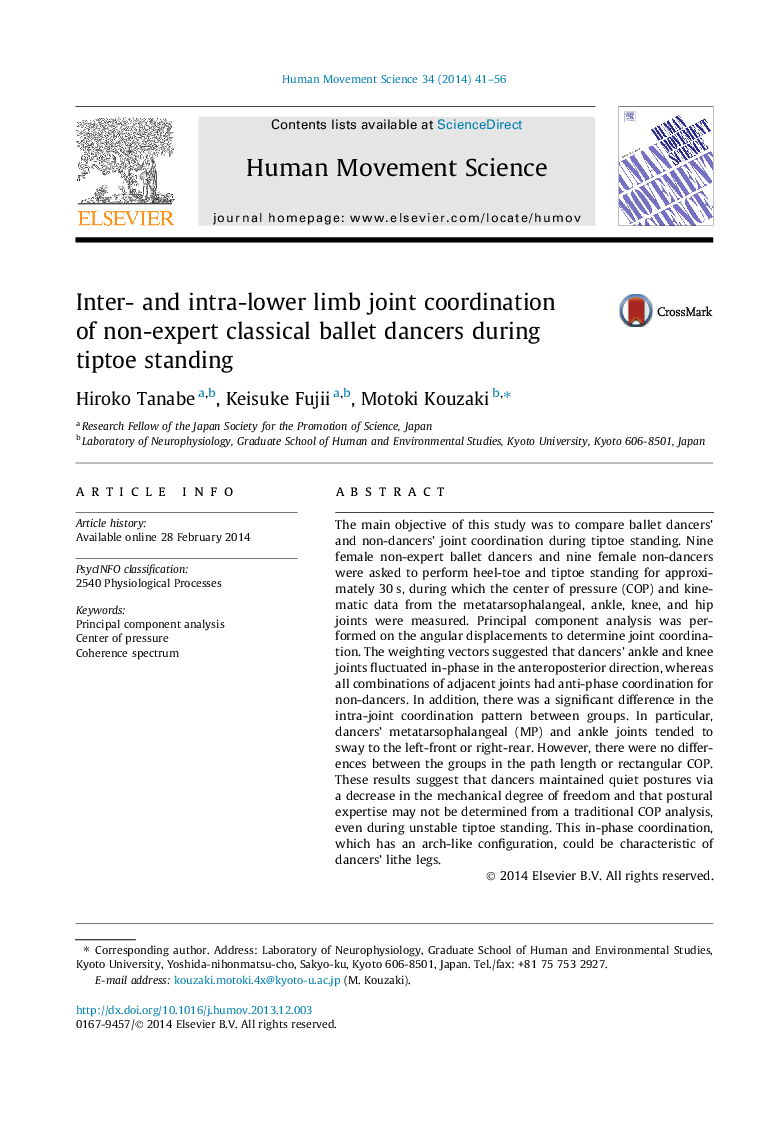| Article ID | Journal | Published Year | Pages | File Type |
|---|---|---|---|---|
| 928409 | Human Movement Science | 2014 | 16 Pages |
•Joint coordination of ballet dancers was assessed by principal component analysis.•Dancers’ ankle and knee joints swayed with in-phase in anteroposterior direction.•Non-dancers showed anti-phase joint coordination between all adjacent joints.•Dancers’ MP and ankle joints tended to sway to the left-front or to the right-rear.•There was no difference in the parameters of COP analysis between the groups.
The main objective of this study was to compare ballet dancers’ and non-dancers’ joint coordination during tiptoe standing. Nine female non-expert ballet dancers and nine female non-dancers were asked to perform heel-toe and tiptoe standing for approximately 30 s, during which the center of pressure (COP) and kinematic data from the metatarsophalangeal, ankle, knee, and hip joints were measured. Principal component analysis was performed on the angular displacements to determine joint coordination. The weighting vectors suggested that dancers’ ankle and knee joints fluctuated in-phase in the anteroposterior direction, whereas all combinations of adjacent joints had anti-phase coordination for non-dancers. In addition, there was a significant difference in the intra-joint coordination pattern between groups. In particular, dancers’ metatarsophalangeal (MP) and ankle joints tended to sway to the left-front or right-rear. However, there were no differences between the groups in the path length or rectangular COP. These results suggest that dancers maintained quiet postures via a decrease in the mechanical degree of freedom and that postural expertise may not be determined from a traditional COP analysis, even during unstable tiptoe standing. This in-phase coordination, which has an arch-like configuration, could be characteristic of dancers’ lithe legs.
